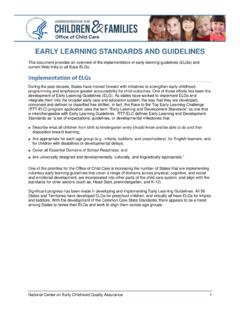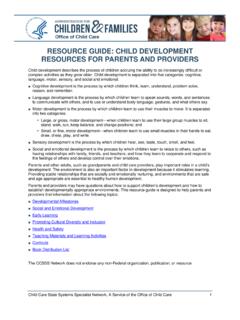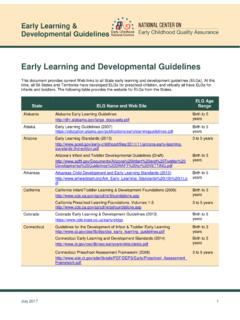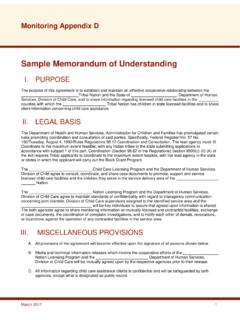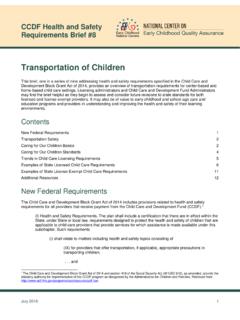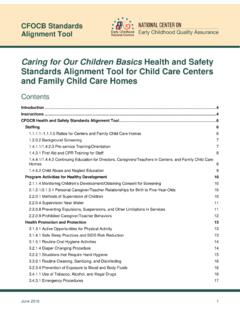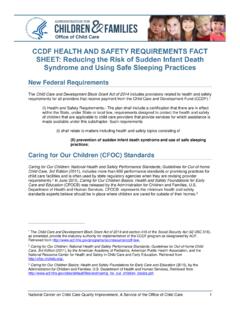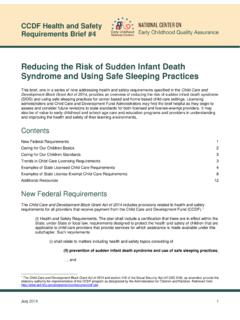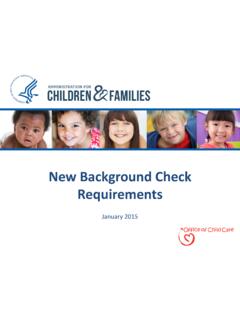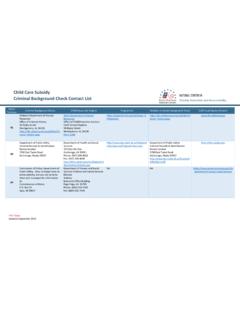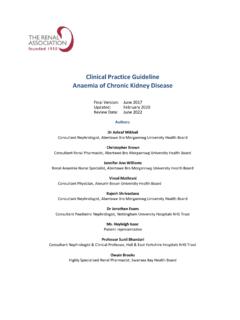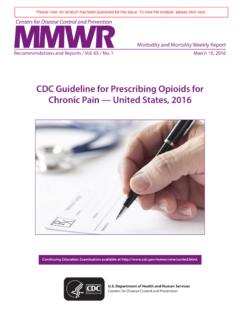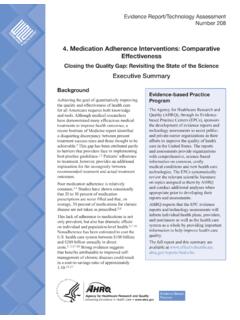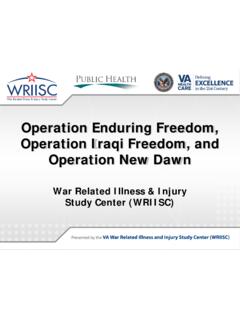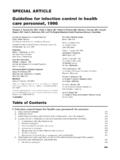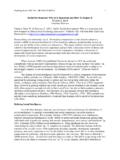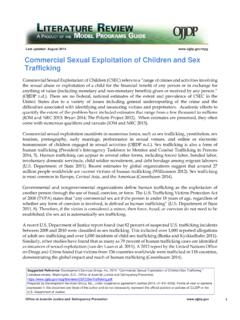Transcription of Building and Physical Premises Safety
1 CCDF Health and Safety Requirements Brief #5. Building and Physical Premises Safety This brief, one in a series of nine addressing health and Safety requirements specified in the Child Care and Development Block Grant Act of 2014, provides an overview of Building and Physical Premises Safety for center- based and home-based child care settings. Licensing administrators and Child Care and Development Fund Administrators may find the brief helpful as they begin to assess and consider future revisions to state standards for both licensed and license-exempt providers.
2 It may also be of value to early childhood and school-age care and education programs and providers in understanding and improving the health and Safety of their learning environments. Contents New Federal Requirements 1. Identification of and Protection From Hazards in Child Care 2. Caring for Our Children Basics 2. Caring for Our Children Standards 5. Trends in Child Care Licensing Requirements 7. Examples of State Licensed Child Care Requirements 9. Examples of State License-Exempt Child Care Requirements 15. Additional Resources 18.
3 New Federal Requirements The Child Care and Development Block Grant Act of 2014 includes provisions related to health and Safety requirements for all providers that receive payment from the Child Care and Development Fund (CCDF). 1. (I) Health and Safety Requirements. The plan shall include a certification that there are in effect within the State, under State or local law, requirements designed to protect the health and Safety of children that are applicable to child care providers that provide services for which assistance is made available under this subchapter.
4 Such requirements (i) shall relate to matters including health and Safety topics consisting of (V) Building and Physical Premises Safety , including identification of and protection from hazards that can cause bodily injury such as electrical hazards, bodies of water, and vehicular traffic . 1. The Child Care and Development Block Grant Act of 2014 and section 418 of the Social Security Act (42 USC 618), as amended, provide the statutory authority for implementation of the CCDF program as designated by the Administration for Children and Families.
5 Retrieved from July 2016 1. Building and Physical Premises Safety (XI) minimum health and Safety training, to be completed pre-service or during an orientation period in addition to ongoing training, appropriate to the provider setting involved that addresses each of the requirements relating to matters described in subclauses (I) through (X);. Identification of and Protection From Hazards in Child Care The Centers for disease Control and Prevention cites injuries are the leading cause of death among children. 2. Each year, nearly nine million children aged from birth to 19 years are seen in emergency departments for injuries, and more than 9,000 children die as a result of being injured.
6 Injury treatment is the leading cause of medical spending for children. 3. Child injuries are predictable and preventable, yet they are one of the most under-recognized public health problems facing our country today. In 2010, motor vehicle crashes were the leading cause of injury death overall. For infants, suffocation was the biggest risk of injury death. Drowning was the leading cause of injury death for children 1 to 4 years. Fires, burns, and falls are other common causes for all age groups. 4. Children need to be safe in order to learn and develop their full potential, whether they are enrolled in home- based, center-based, or family child care settings.
7 Because young children like to explore, consistent Safety practices, like using gates, locks, and other Safety equipment, prevent children from getting into dangerous situations. 5 State licensing requirements that address these Safety practices and support implementing preventative strategies, such as offering caregiver orientation and training, using Safety and maintenance checklists, and documenting injury and incident information, help protect children while in care. Active supervision is the most effective strategy for creating a safe environment and preventing injuries in young children.
8 Educators use this strategy to ensure that children of all ages explore their environments safely. Every program can keep children safe by teaching all educators how to look, listen, and engage. 6. Caring for Our Children Basics Released in 2015 by the Administration for Children and Families (ACF), Caring for Our Children Basics: Health and Safety Foundations for Early Care and Education (CFOCB) represents the minimum health and Safety standards experts believe should be in place where children are cared for outside their homes.
9 7 CFOCB seeks to reduce conflicts and redundancies found in program standards linked to multiple funding streams. Though voluntary, ACF hopes CFOCB will be a helpful resource for States and other entities as they work to improve health and Safety standards in licensing and quality rating and improvement systems. The following standards from CFOCB address Building and Physical Premises Safety in child care settings. 2. Centers for disease Control and Prevention, Department of Health and Human Services. (2012). Child injury vital signs.
10 Retrieved from 3. Centers for disease Control and Prevention, Department of Health and Human Services. (2016). Injury prevention & control: Protect the ones you love child injuries are preventable [Web page]. Retrieved from 4. National Center for Injury Prevention and Control, Centers for disease Control and Prevention, Department of Health and Human Services. (2012). National action plan for child injury prevention. Retrieved from 5. Head Start Early Childhood Learning & Knowledge Center, Office of Head Start, Administration for Children and Families, Department of Health and Human Services.
